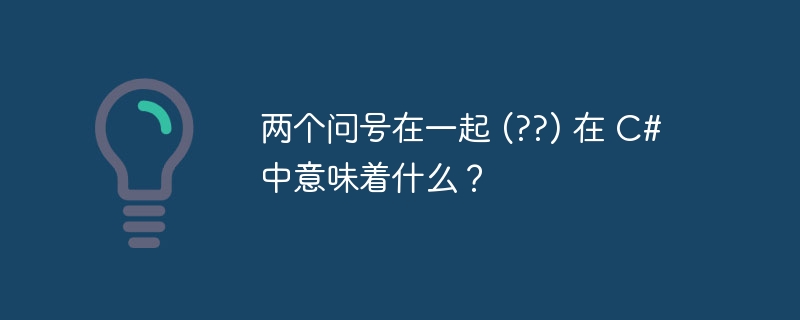

This is the null-coalescing operator. The null-coalescing operator returns the value of its left operand if the left operand is not null; otherwise, it evaluates the right operand and returns its result. The ?? operator does not evaluate its right operand if the left operand evaluates to non-null.
Nullable types can represent undefined or values from the type domain. When the left operand has a nullable type, we can use the ?? operator to return the appropriate value. If we try to assign a nullable value type to a non-nullable value type without using the ?? operator, we will get a compile-time error and if we force a cast, an InvalidOperationException will be thrown.
Following are the advantages of Null-Coalescing operator (??) -
It is used to define default values for nullable items (value types and reference types).
It prevents InvalidOperationException exceptions at runtime.
It helps us eliminate many redundant "if" conditions.
It applies to reference types and value types.
The code becomes organized and readable.
Demonstration
using System;
namespace MyApplication{
class Program{
static void Main(string[] args){
int? value1 = null;
int value2 = value1 ?? 99;
Console.WriteLine("Value2: " + value2);
string testString = "Null Coalescing";
string resultString = testString ?? "Original string is null";
Console.WriteLine("The value of result message is: " + resultString);
}
}
}The output of the above example is as follows.
Value2: 99 The value of result message is: Null Coalescing
The above is the detailed content of What does two question marks together (??) mean in C#?. For more information, please follow other related articles on the PHP Chinese website!
 unicode to Chinese
unicode to Chinese
 Introduction to xmpp protocol
Introduction to xmpp protocol
 What to do if the CPU temperature is too high
What to do if the CPU temperature is too high
 Usage of sprintf function in php
Usage of sprintf function in php
 How to open mds file
How to open mds file
 The role of the formatfactory tool
The role of the formatfactory tool
 JS array sorting: sort() method
JS array sorting: sort() method
 The latest ranking of the top ten exchanges in the currency circle
The latest ranking of the top ten exchanges in the currency circle
 How to check if port 445 is closed
How to check if port 445 is closed




